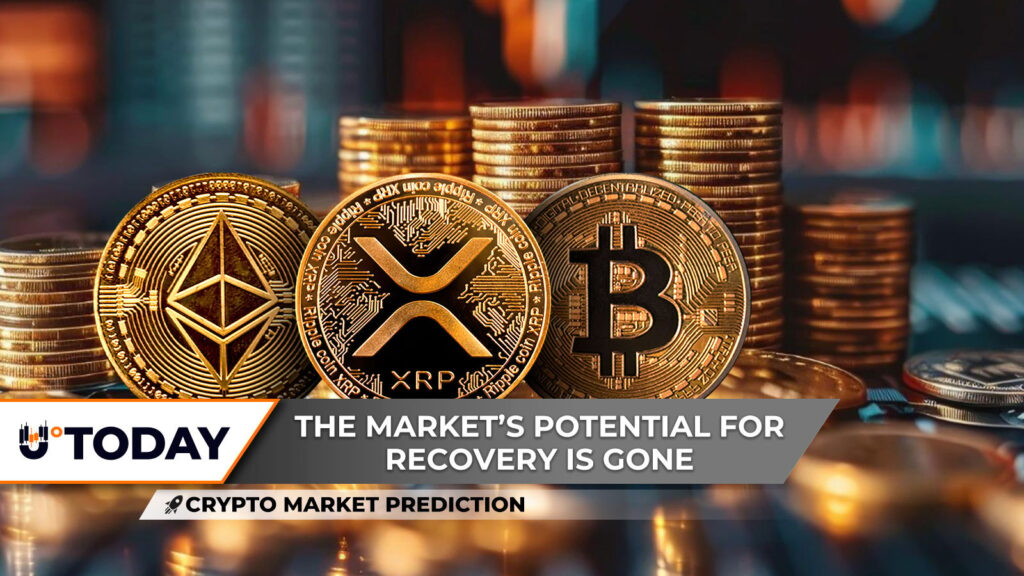To say that the market is not doing so well today would be an understatement. Bitcoin is painting its worst monthly candle, XRP is about to reach the dollar and enter “hard reset” mode and Ethereum hides some bullish potential.
Bitcoin’s ugly candle
It is not an exaggeration to say that Bitcoin’s monthly chart shows one of the ugliest candles it has seen in over 10 years. After peaking above $130,000 just a few weeks ago, Bitcoin is now returning to the mid-$80,000s due to a single monthly bar that has the potential to erase almost the entire 2025 uptrend.
From a structural perspective, this type of candle forces long-term investors to take a step back and reassess whether this is a violent but brief shakeout, or whether the market has already reached its cycle peak. The magnitude of the current decline speaks for itself: in the past it has been rare for a monthly candle at all-time high levels to collapse by approximately 23%.
In the past, bull markets have experienced significant monthly corrections, but typically after the parabola reached full maturity. This time, Bitcoin began to accelerate before the momentum was broken. This raises an important point: going into the fourth quarter, Bitcoin might not have been as structurally sound as the narrative suggested.
Technically speaking, the candle risks closing below the 2021 high region, which served as support during the initial stage of the new cycle. The next significant support group, which lies between $70,000 and $72,000, where the 20-month EMA and the previous consolidation zone intersect, would be reached if that level were lost on a monthly basis, effectively ending two years of bullish progress. The real line in the sand is about $60,000, below that.
Furthermore, the RSI is falling sharply from overheated levels on the monthly period, which generally indicates exhaustion rather than continuation. Furthermore, the volume is not supportive, showing a classic reversal signature of decline on the way up and explosion on the way down.
XRP ready
The charts do not allow for much sugarcoating and the current XRP market structure is disintegrating faster than most participants anticipated. From the local high around $3.50, the asset has moved deeper into the descending channel that has been governing the price action. At the upper boundary of this channel, all recovery attempts have been thwarted and the most recent decline indicates that sellers are still in full control.
XRP is currently trading at the lower trend line of the descending channel, slightly above $2. Historically, this area has produced brief bounces acting as a makeshift springboard. However, in recent months the general trend has not stopped even once. In other words, support is important here, but it has not yet resulted in a significant change in the trend.
The real question is whether XRP can hold this support long enough to avoid a fall towards the $1 hard reset level. That figure is not arbitrary but is based on the chart structure. Prior to its explosive rallies in late 2024 and early 2025, XRP consolidated in the highly liquid and psychologically significant region of $1 to $1.20. The market almost always moves in that direction if the descending channel breaks decisively to the downside. Since $1 is the line that many long-term participants consider fair value during corrections, it is technically the point at which buyers become very aggressive.
The fact that the volume of recent declines is increasing (never a bullish sign) is concerning. Instead of panic selling, strong red candles with increasing volume usually indicate conviction selling. That increases the likelihood of a deeper pullback. Furthermore, momentum indicators are yet to show a bullish divergence, indicating that the market is not signaling the end of the downtrend.
But it is not a fact that XRP will plummet to $1. We may witness another bounce towards the $2.40-2.60 region if buyers defend the lower boundary of the channel once again. However, any bounce is simply a countertrend move rather than a reversal, unless the price breaks out of the channel and reclaims the upper moving average.
Ethereum isn’t that bad?
Although Ethereum is selling off rapidly, the market continues to overlook a structural fact: the strength of the asset’s overall trend has not truly disappeared. What we are witnessing is a discrepancy between the underlying recovery structure that has been developing for months and Ethereum’s marked short-term downtrend, a split that frequently precedes significant pullbacks.
ETH has clearly shown a bearish trend on the chart by breaking sharply below the 50-day, 100-day, and 200-day moving averages. The market simply broke through the $3,000 support level without hesitation, the momentum has faded and the volume spikes are almost entirely on the selling side. From a purely trend-following perspective, the situation is unpleasant. A ladder of declining confidence has resulted from the rejection of every recovery attempt over the past two months to progressively lower highs.
However, this is where the discrepancy arises: Ethereum’s price is falling, while its long-term structural fundamentals continue to strengthen, and this mismatch rarely lasts for long. Bets are still on a marked and continued uptrend. More ETH is being locked up than ever, reducing the amount of liquidity available during a time of significant capitulation. Although speculative volume has disappeared, organic usage remains comparatively stable, so network activity has not plummeted, as the chart might suggest.

